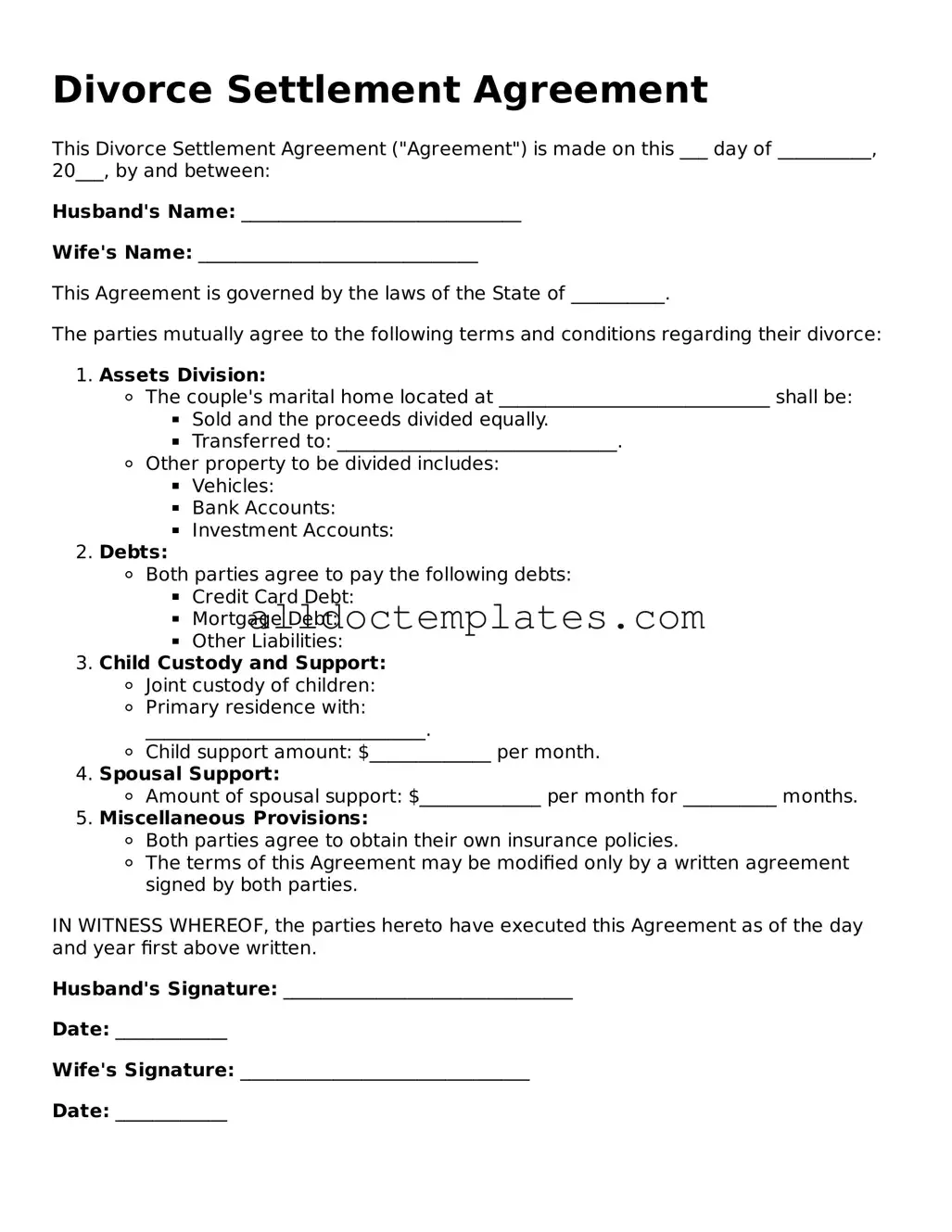Divorce Settlement Agreement
This Divorce Settlement Agreement ("Agreement") is made on this ___ day of __________, 20___, by and between:
Husband's Name: ______________________________
Wife's Name: ______________________________
This Agreement is governed by the laws of the State of __________.
The parties mutually agree to the following terms and conditions regarding their divorce:
- Assets Division:
- The couple's marital home located at _____________________________ shall be:
- Sold and the proceeds divided equally.
- Transferred to: ______________________________.
- Other property to be divided includes:
- Vehicles:
- Bank Accounts:
- Investment Accounts:
- Debts:
- Both parties agree to pay the following debts:
- Credit Card Debt:
- Mortgage Debt:
- Other Liabilities:
- Child Custody and Support:
- Joint custody of children:
- Primary residence with:
______________________________.
- Child support amount: $_____________ per month.
- Spousal Support:
- Amount of spousal support: $_____________ per month for __________ months.
- Miscellaneous Provisions:
- Both parties agree to obtain their own insurance policies.
- The terms of this Agreement may be modified only by a written agreement signed by both parties.
IN WITNESS WHEREOF, the parties hereto have executed this Agreement as of the day and year first above written.
Husband's Signature: _______________________________
Date: ____________
Wife's Signature: _______________________________
Date: ____________
